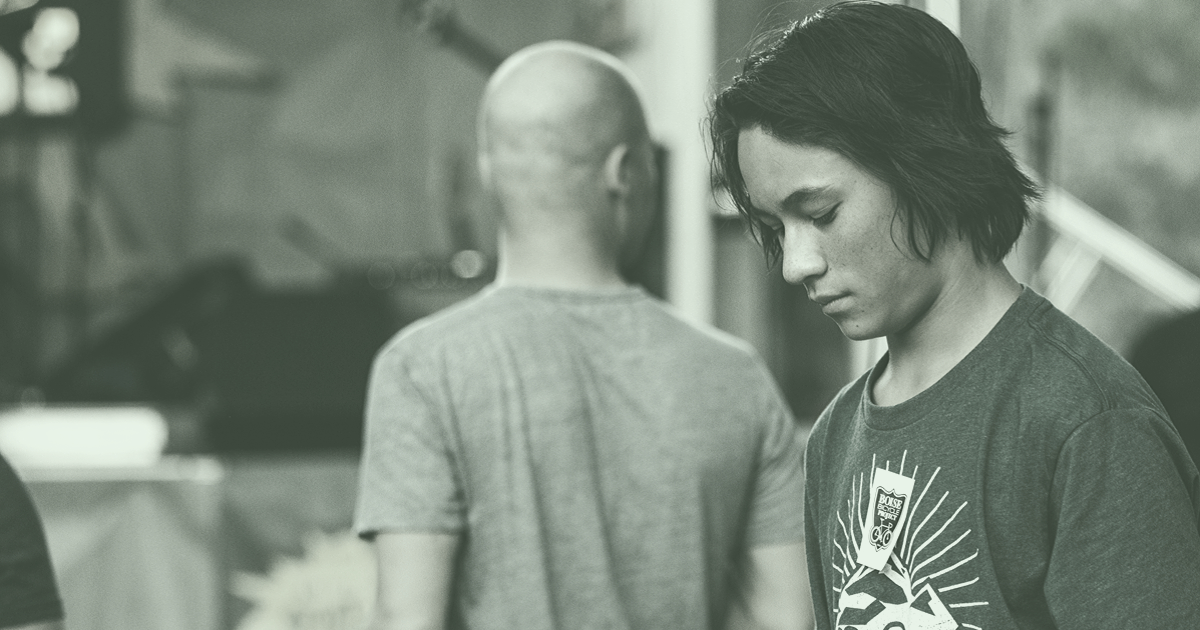The evidence of a failing mental health system is everywhere. Though residents would like to continue to turn a blind eye to the urban decay that now reaches into nearby suburbs and spills into San Bernadino, government officials present speeches meant to espouse resolve but to no avail. Southern California has a social consciousness crisis that screams “Please help us,” yet their outcry falls on silent indifference.
Homelessness and Mental Health, Bread and Butter of Justice System
Sitting in on local city courtroom hearings for people and their families who have found themselves at justice’s doorstep, their stories often tell a similar beginning, middle and end. A job loss, the death of a family member, a broken relationship, an injury, a surgery or getting to a moment in time where every part of their day is too much to handle.
Then there is the drinking and drug dependency to mask the pain. Multiple arrests—misdemeanors, then felonies. The financial pressures that wear heavy on the family. The strain on government resources and the court system. For resolve, the choices are few: jail, prison, hospital settings, and ultimately – the streets. What is more disconcerting is that we are not in an economic depression or extensive recession, at least at this point in time.
Yesterday’s Sorrow Is Today’s Truth
Ongoing trauma or an unforeseen life circumstance can alter a person’s ability to deal with personal reality in a healthy manner. Over time and left untreated, mental health, when compromised, affects life decision-making. An already shaky situation can turn one problem into many, eventually creating a permanent, negative circumstance. These are the faces of homelessness, personified in our justice system, a revolving door to nowhere.
California Governor Gavin Newsom stated the following one year before taking office, “We lack the political will necessary to elevate brain illness as a top-tier priority.” Republicans, Democrats, Independents, and others argue about the origins of Southern California homelessness rates. However, many social workers will tell you that the risks are due to a breakdown of what people used to be able to rely on:
- Family
- Jobs
- Housing
- Healthcare
- Societal ethics
- Community
Life can be unpredictable. In turn, if people don’t have the emotional strength, financial support, or public resources to count on, homelessness is a real possibility for mainstream America.
Why Poor Mental Health Rates Are Escalating in Los Angeles
Quality of life matters. In fact, it’s the primary reason why many people migrated to the Golden State during the 20th century. But all is not what it once was. The long for sunshine, pristine beaches and the Hollywood limelight have dimmed. In fact, there are more people leaving California than relocating to it. This adds to the pressure already put on existing residents evident in higher taxes, escalating crime rates, and an overall sense of psychological uneasiness that comes by its people honestly. Here’s why.
Mental Health for Youth, Ignored
Children and teens can often exhibit behaviors that are less than ideal. Just ask any parent or caregiver. Everyday stress, feelings of abandonment, peer pressures, and hormonal changes can shift the way young people think, feel and act. Though there’s a fine line between defiance and mental health challenges.
For every adult who is dealing with mental illness, there are children, adolescents, teens and young adults who struggle with it as well. The same stigma about mental illness lives across all age groups, genders, sexual orientations, socio-economic status, race, and religion. Mental illness is an equal opportunity destroyer of hope.

What does this look like for a juvenile approaching adulthood? More than 30 percent of prison inmates in California are also being treated for a mental health disorder. This is a 150 percent increase over a near 10-year period. And for the state mental health hospital intakes, 90 percent come from the criminal justice system. So where can an at-risk youth go for mental health assistance, before becoming another court system statistic?
This is how mental illness develops in young people, growing more evident as they emerge into adulthood:
- Experiencing at least 4 traumatic events during childhood; abuse, neglect or domestic violence
- Increases risk for depression, anxiety, suicide and PTSD
- Youth, ages 12 to 17, in California exhibit symptoms of depression more that U.S. national average
- Suicides in Californians ages 15 to 19 has increased 63% in the last 20 years
- Near 75% of serious mental illness shows up before a person is 25 years old
- In those with serious mental illness untreated, mortality is 25 years earlier than the norm
Without the necessary resources, mental health crises seemingly grow out of control. And the homeless in Southern California are quickly knocking on the doors of every neighborhood. How we have answered, on the local and state level, is questionable at best.
Is the Million Dollar Real Estate Market to Blame
Housing is a problem in Southern California but not due to over demand and under supply – at least not traditionally speaking. There is ample housing but only for those who can afford it. According to Zillow, a city will experience an uptick in homelessness once the average rent equates to 22 percent of the average income.
- Tenants in Los Angeles County allocate 49% of their income to pay their rent.
- More than 600,000 people have to use 90% percent of their income each month to pay rent.
- Median rent in Los Angeles is $3500.
- The average home value in LA metro is $694,200.
Not every adult has a college degree or a professional job. Pay rates, even the recently passed minimum wage hike at $14.25 an hour, cannot adequately fulfill the financial needs of local residents.
With a lack of affordable housing in the area, many people are just one paycheck away or one unexpected life event from homelessness. There are the haves and have nots with a middle class that’s melting at its core. For those who find temporary solace under the shadow of a stoop outside the lobby of a well-to-do, urban, residential loft project, affordable housing only exists if it’s free.
Free housing was on the table. Until it wasn’t.
There have been recent efforts in funding new construction for multi-family housing to help remove people from living on the streets: The S.B. 50 bill promising 3.5 million new units was defeated. The city’s sales tax increase, with 16 percent of it set to be utilized towards a home voucher program, proved too costly and lacked long term viability.
Issues due to homelessness affect nearby residents as well. For some, homelessness has provided an opportunity to capitalize on, seen in Venice. LA County Supervisor Mark Ridley Thomas said, “We simply can’t build affordable housing fast enough.”
Real estate issues certainly play a part in the homelessness crisis, but mental health is a byproduct of community awareness, unmet.
Where Is Home When There’s No Where Else to Go
Adolescents and young adults whose home-life isn’t safe will often turn to the streets in search of something better. Homeless teenagers from other parts of the country will make their way to Venice, Santa Monica, Long Beach and other glistening districts because of the temperate climate and restaurants that provide a wealth of sustenance at no cost.
Forgiving Drug Culture Gives False Sense of Homelessness Acceptance
Compared to other U.S. states, California is and has always been a more progressive, diverse, and culturally-friendly environment. Seen as an early frontier in recreational marijuana use, its acceptance of cannabis is viewed, by some, as a precursor to a more liberal position regarding drug use amongst the homeless.
When Drug Addiction Meets Homelessness
While the people of Southern California are more likely to find used needles in the streets, parks and sidewalks, heroin addiction represents a small part of the public safety issues presented by homelessness. Without the necessary state-funded addiction treatment programs available to help with opioid and other substance use disorders, ensuring clean needles is a short-term fix in search of a long term solution.
Co-Occurring Disorders Are Prevalent in the Homeless
Healthcare practitioners who work with patients struggling with alcohol and drug addiction often witness what is referred to as dual diagnosis or a co-occurring disorder. This happens when a substance addiction exists concurrently with a mental illness such as depressive, anxiety, or bi-polar disorders.

For some people, long standing substance abuse will alter brain chemistry affecting mental health, leading to the development of a mental illness. Without treatment, they are six times more likely to attempt suicide.
Living with an existing mental illness, when left untreated, can lead to drug or alcohol use as a means to help mask the psychological and behavioral symptoms of the condition.
For the untrained, the signs of mental illness and substance addiction can mirror one another making it difficult to discern the origin of the issue and what to treat first. Co-occurring disorders must be treated simultaneously.
When Insurance Turns their Back and Local Resources Aren’t Enough
The term parity applies to both state and federal laws that require insurance companies to allow for equal levels of care for physical and mental health treatment in patients that need the help. Although well-intended, law is only as good as our ability to enforce it. Loopholes in the system that favor insurers take precedence over the insured in the form of pre-authorization guidelines, unreasonable copays, and what is deemed as a medical necessity provides the stop gaps needed to keep people sick.
So what can we do? What can you do?
Eggleston Behavioral Health Program Caters to Local Need
It’s obvious that we need to get back to basics in how we treat neighborhood blight, by remembering that at the root of homelessness are people. We all need more encouragement, life skills, and empowerment to experience self-acceptance as more than a hope but a reality.
When we can come together on a humanitarian level and bridge the gaps in available mental health resources, community serves us better. If you have a child struggling with emotional issues or know of a family member needing assistance with substance addiction, reach out to Eggleston Behavioral Health at 1-800-230-8883. We have been serving Los Angeles and San Bernadino families for more than 40 years, providing treatment for childhood trauma, mental illness, co-occurring disorders, emotional challenges, substance abuse, and domestic violence.

Assistant Executive Director
Cassandra Gibson-Judkins, Assistant Executive Director, is a licensed clinical social worker who has dedicated her career to providing services to children, youth and families. She has been a loyal employee at Eggleston since 1978. During her tenure at Eggleston, she has held numerous leadership positions in residential treatment, foster family, adoptions, and behavioral health program divisions. In addition, she served at the Department of Children and Family Services form 10 years, specializing in adoption services.



